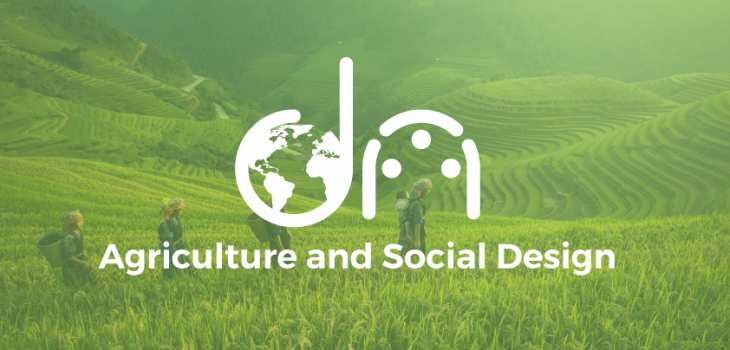 Blog
Blog
Agriculture and Social Design
Agriculture and Social Design
"The dependency of agriculture to sustain human life is comparable to none."
16th October 2017 - Design for Need, Social Design, Agriculture
By Finn Brownbill and Matt McClumpha
Welcome back to our Social Design series, this week we are focusing on the global field of Agriculture and how sustainable designs can be implemented to improve the welfare for all. The history of agriculture spans thousands of years of development all across the world, involving different cultures, climates and technologies. It has not only supported the infrastructure of civilisation, it has been leading factor in creating it. The dependency of sustaining human life is comparable to nothing else. In terms of agriculture producing food, we all have to eat, there is no dodging that.
In certain locations, some people are fortunate enough to get just the right amount of rainfall, not too much, not too little. The soil is fertile, with an abundance of nutrients to help the crops grow tall and strong. Perhaps even stable weather patterns which can be predicted and prepared for, meaning calm winds and highly manageable temperature. Maybe even the farmers are highly educated and experienced in their field (excuse the pun) and have all the latest technology to produce their goods in the most efficient manner. Of course, these ideal conditions are extremely rare. To even tick a few of these boxes is only present for a small fraction of the world’s farming industry. For the lucky, agriculture is temperamental at the very least. For the unlucky, agriculture is a struggle. For the communities we chose to help, agriculture can be a matter of life or death.
As I am sure you are aware, each and everyone of us is dependent on agrarian and/or pastoral farming, large scale and small, or maybe you are even a fruitarianism who only eats fruit that falls from a plant. One thing is present in all of this, we all eat the end product to survive. In some cases, the dependency for survival extends for not only those who eat it, but those farming or growing it. For certain populations, whole towns are entirely built around an agricultural infrastructure. Take Bambui, Cameroon for example. When working on our ‘Pure Water’ project in this area, we discovered that working hard in the tropical climate, Bambui is a farming village in which 90% of its economic activities depend on agriculture. Our attention was brought to the village as rapid urbanisation was putting a strain the community’s resources, threatening Bambui’s agricultural way of life. This was linked to increased pressure on the existing water supply due to harmful farming practices.
So for the sake of the economy as well as food resources for communities like Bambui, if the farms can’t sustain efficient levels then the whole town comes to a halt. More than 3 billion people – almost half of the world’s population – live in rural areas, roughly 2.5 billion of these rural people derive their livelihoods from agriculture. Here at Design for Need we work in areas where agriculture is ‘life-threatening’, we collaborate to design a sustainable efficient future for these communities, especially in regard to small scale food producers. In these areas, infrastructure is either extremely weak or nonexistent. Due to dependency on one type of industry, income diversification is extremely low. In many cases, it can also exacerbate the gender divide and lead to child labour, women boost the rural economy, but resources are not always at their disposal to be productive, and it is often the case for children to labour in the fields in their place. Fortunately, in the present day the technological advances the world are going through are boosting the socio-economic value of agricultural practices on a global scale. In fact "Growth from agriculture is 11 times more effective at reducing poverty than any other sector". However, there are still many areas left in the past. We can’t recreate the enormity of this ancient practice that is ‘agriculture’, but social designs can help its efficiency, safety, quality and boost socio-economic standards.
A fantastic example of sustainable social design is the water wheel pump; this design simply consists of a water wheel and a coiled tube. As the wheel rotates from the current of the stream the tube picks up the water, the coils build pressure in the pipe allowing the water to be pumped elsewhere. This design is ideal for irrigation, allowing farmers to control the amount of water to plants in fields which may have not been possible before, this is especially useful in areas of low elevation. It’s simple sustainable designs like these which can make a big difference. If you want more details about how the water wheel pump works you can check out this video (although the music is something to be left undesired).
When we talk about farming you may think of crops and livestock but there are also many other types of farming. In western Kenya, wild fish stocks are dwindling in Lake Victoria due to overfishing. The tilapia, the most popular freshwater fish in Kenya, is becoming scarce, with most people resorting to catching juvenile fish with smaller nets. The solution came from Farm Africa with the promotion of fish farming. This lead to the production in freshwater ponds to help protect Lake Victoria’s strained resources and provide a population with a sustainable source of fish. Solutions don’t necessarily have to be a product, it could instead be providing education and support to farmers by introducing them to aquaculture; this increasing employment, boosts income and provides families with an affordable source of protein.
Well that about wraps it up in regard to the field of agriculture and how Social Design can be incorporated to help solve its many problems. Stay tuned for our final article in this series which will focus on our third area of design expertise: ‘Environmental Conservation’. See you soon.

Finn and Matt
Both founders Matt and Finn occasionally join forces to write articles together, like this one. Because two heads are better than one. Enjoy!